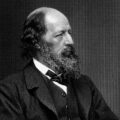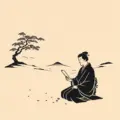Trochees are an extremely simple tool in the writer’s arsenal. These simple, two-syllable footed words are perfect for adding rhythm and meter to your writing, whether it’s poetry or prose.
While they are used by poets, writers, children, songwriters and anyone you’ll likely meet on the street, they are often used without consideration. This guide will explore what trochees are, how to use them when you’re writing free verse poetry, haikus, sonnets or other poetic forms, and some examples of trochaic meter.
Contents
What Are trochees?
A trochee is a metrical foot used in poetry that consists of a stressed syllable followed by an unstressed syllable. Trochaic meter is often used in nursery rhymes and children’s songs because it is easy to understand and has a catchy rhythm.
While they are extremely simple, trochees (when used intelligently) can add a lot of interest and variety to the rhythmic style of a poem.
When to use trochees in poetry
Trochaic meter is very versatile and can be used in a number of different ways. One way to use trochees is to create a sense of forward momentum in your poem. This can be useful for poems that are meant to be read aloud, as the rhythm will help carry the reader along.
Another way to use trochees is to create a feeling of intensity or urgency. This can be done by using words with strong emphasis on the stressed syllable, or by using a lot of trochaic words in quick succession.
Finally, trochees can also be used for comic effect. This is because the stressed-unstressed pattern of trochaic meter is often unexpected and can create a humorous effect when used in the middle of a sentence.
How do you identify a trochee?
A trochee is very easy to identify because it consists of a stressed syllable followed by an unstressed syllable. The stressed syllable is usually accented or pronounced with more emphasis than the unstressed syllable.
What are Iambs and trochees in poetry?
Iambs and trochees are two of the most common metrical feet used in poetry. Iambs consist of an unstressed syllable followed by a stressed syllable, while trochees consist of a stressed syllable followed by an unstressed syllable.
Iambic meter is often considered to be more “natural” sounding than trochaic meter, as it mimics the rhythm of human speech. For this reason, iambic meter is often used in formal poetry, such as sonnets.
Trochaic meter, on the other hand, is often considered to be more forceful and powerful sounding than iambic meter. This is because the stressed syllable is given more emphasis, which can create a sense of urgency or intensity.
What is the difference between trochee and dactyl?
The main difference between trochee and dactyl is that a trochee consists of a stressed syllable followed by an unstressed syllable, while a dactyl consists of a stressed syllable followed by two unstressed syllables.
What’s the opposite of trochee?
The opposite of a trochee is an iamb. An iamb consists of an unstressed syllable followed by a stressed syllable, while a trochee consists of a stressed syllable followed by an unstressed syllable.
What are examples of trochees?
Some examples of trochees include the words “table,” “baby,” and “popcorn.” When these words are put into a sentence, the trochaic meter is very easy to hear.
What is an example of a Trochaic Tetrameter?
Here are some examples of trochaic words:
TA-BLE
POP-CORN
BA-BY
When these words are put into a sentence, the trochaic meter is very easy to hear:
The table was wobbling.
I love eating popcorn at the movies.
The baby started to cry.
As you can see, trochaic words are extremely simple, and are often overlooked in favour of more complex terms or structures.
How are Trochees used in poetry?
Trochees are often used in poetry to create a sense of forward momentum or urgency. This is because the stressed syllable is given more emphasis, which can make the reader feel as though they are being propelled forward.
This is a particularly powerful tool when you’re building towards something, and the speed of recital increases. Trochees are often used to develop poetic rhythms and structures within free verse poetry which can help to get the listener’s heart-racing.
What are some famous poems that use trochees?
Some famous examples of poems that use trochees include “The Waste Land” by T.S. Eliot and “The Raven” by Edgar Allan Poe.
In “The Waste Land,” Eliot makes use of trochaic meter to create a sense of urgency and unease. This is seen in lines such as “I will show you fear in a handful of dust.”
Poe’s “The Raven” is also full of trochaic words and phrases, which help to create a sense of foreboding and unease. This is seen in lines such as “Once upon a midnight dreary, while I pondered, weak and weary.”
How can I use trochees in my poetry?
If you’ve written poetry before, then you’ll already have used trochees in your writing. There are thousands of trochees in the English language, so it’s likely that you’ve already used them without even realising it!
However, using trochees as a poetic tool is very different towards using them in everyday language or writing. That’s one of the reasons that poetry is such an essential tool for writers – it allows you to play with language and create new ways of thinking about and using words.
When you’re using trochees in your poetry, it’s important to be aware of the rhythm and flow that they create. This is because the stressed syllable is given more emphasis, which can have an incredible impact on the tone and pace of a poem.
For example, if you’re building towards something, then the use of trochees following other forms of poetic expression can create an incredible sense of pace and speed.
Similarly, if you’ve written most of the poem in an iambic form, (including iambic pentameter, iambic tetrameter and so on), the sudden shift to a trochaic form could symbolise a range of different things, including:
- A change in speaker or location in a narrative poem
- A change in subject
- The introduction of new ideas
- The acceleration of a poem towards greater passions, or a sense of speeding towards an ending
Trochaic poetry isn’t as popular as iambic poetry – however, it can be equally as poweful when used correctly.
Hopefully, you’ve found this guide useful, and you’re ready to start experimenting with trochaic poetry of your own!
- Glossary of Japanese Poetry Terms - 26 February 2025
- What is Waka Poetry? - 23 May 2024
- How to Identify the Kigo in a Haiku: - 22 March 2024





